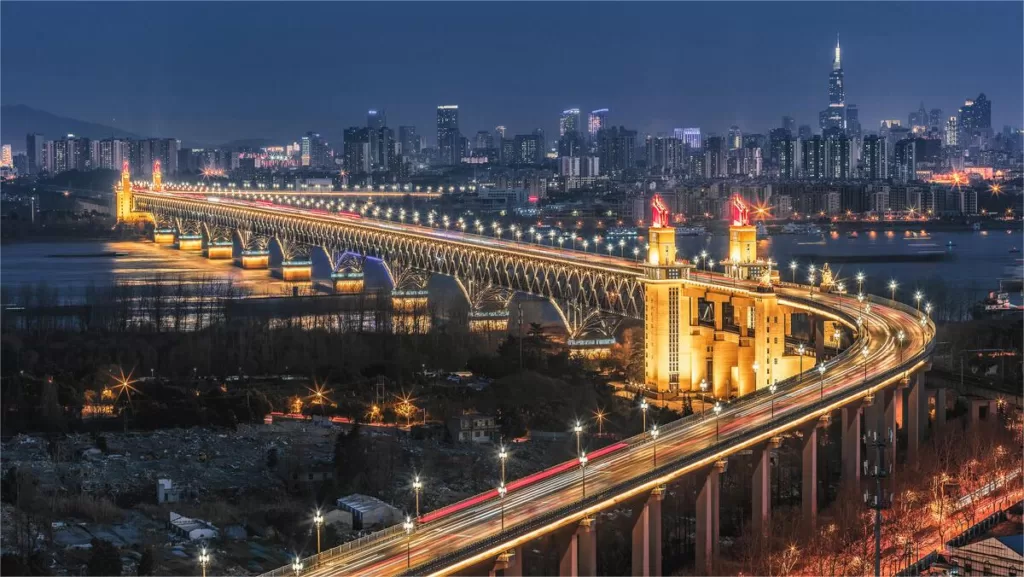10 facts about Nanjing Yangtze River Bridge


The Nanjing Yangtze River Bridge is an iconic bridge located in Nanjing, Jiangsu Province, China. It is one of the most significant engineering marvels in the country and has played a crucial role in connecting the northern and southern parts of China since its completion in 1968. Here are some intriguing facts about the Nanjing Yangtze River Bridge:
Историческая значимость: The construction of the Nanjing Yangtze River Bridge holds great historical significance. It was built during the time of the Cultural Revolution in China, and its completion was seen as a symbol of national unity and technological prowess.
Architectural Feat: At the time of its completion, the Nanjing Yangtze River Bridge was the longest bridge in China and one of the largest suspension bridges in the world. It stretches across the Yangtze River for a total length of 4,589 meters (15,052 feet) and has a main span of 1,577 meters (5,174 feet).
Dual-Purpose: The bridge serves as both a highway and a railway bridge. It has two decks, with the upper deck accommodating a four-lane highway and the lower deck carrying a double-track railway line. This dual-purpose design was a pioneering concept during its construction.
Design Collaboration: The bridge’s design was a result of collaboration between Chinese engineers and experts from the Soviet Union. The Soviet team, led by experts such as V. K. Barmin and N. N. Pavlov, provided technical assistance and expertise in constructing the bridge.
Construction Challenges: Building the Nanjing Yangtze River Bridge posed significant challenges due to the strong currents and high winds in the region. Additionally, the soft riverbed soil required special foundation designs to ensure stability. The engineers implemented innovative techniques to overcome these challenges, including the use of cofferdams and prefabricated components.
Symbolic Features: The bridge incorporates various symbolic features. The towers on each end of the bridge resemble a traditional Chinese paifang (archway) and feature intricate decorations. The towers, along with the sweeping lines of the bridge, create a visually appealing and majestic structure.
Tourist Attraction: The Nanjing Yangtze River Bridge has become a popular tourist attraction in Nanjing. Visitors can enjoy panoramic views of the Yangtze River and the cityscape from designated viewing areas on the bridge. The bridge is especially captivating at night when it is illuminated by colorful lights.
Cultural References: The bridge has made appearances in several films, literature, and artwork. It has become a cultural symbol of Nanjing and is often depicted in paintings and photographs, representing the city’s history and modernization.
Longevity and Expansion: The Nanjing Yangtze River Bridge has stood the test of time. It has been in operation for over five decades, serving as a vital transportation link. To accommodate the increasing traffic demand, a parallel bridge named the Nanjing Yangtze River Second Bridge was completed in 2001, alleviating congestion on the original structure.
Iconic Status: The Nanjing Yangtze River Bridge holds immense symbolic and emotional significance for the Chinese people. It represents the country’s determination, engineering achievements, and national unity. The bridge is considered an iconic landmark and a source of pride for both Nanjing and China as a whole.
The Nanjing Yangtze River Bridge stands as a testament to human ingenuity and engineering excellence. Its construction and continued operation have not only facilitated transportation but also captured the imagination of people around the world.
Факты из жизни местного населения Цзянсу